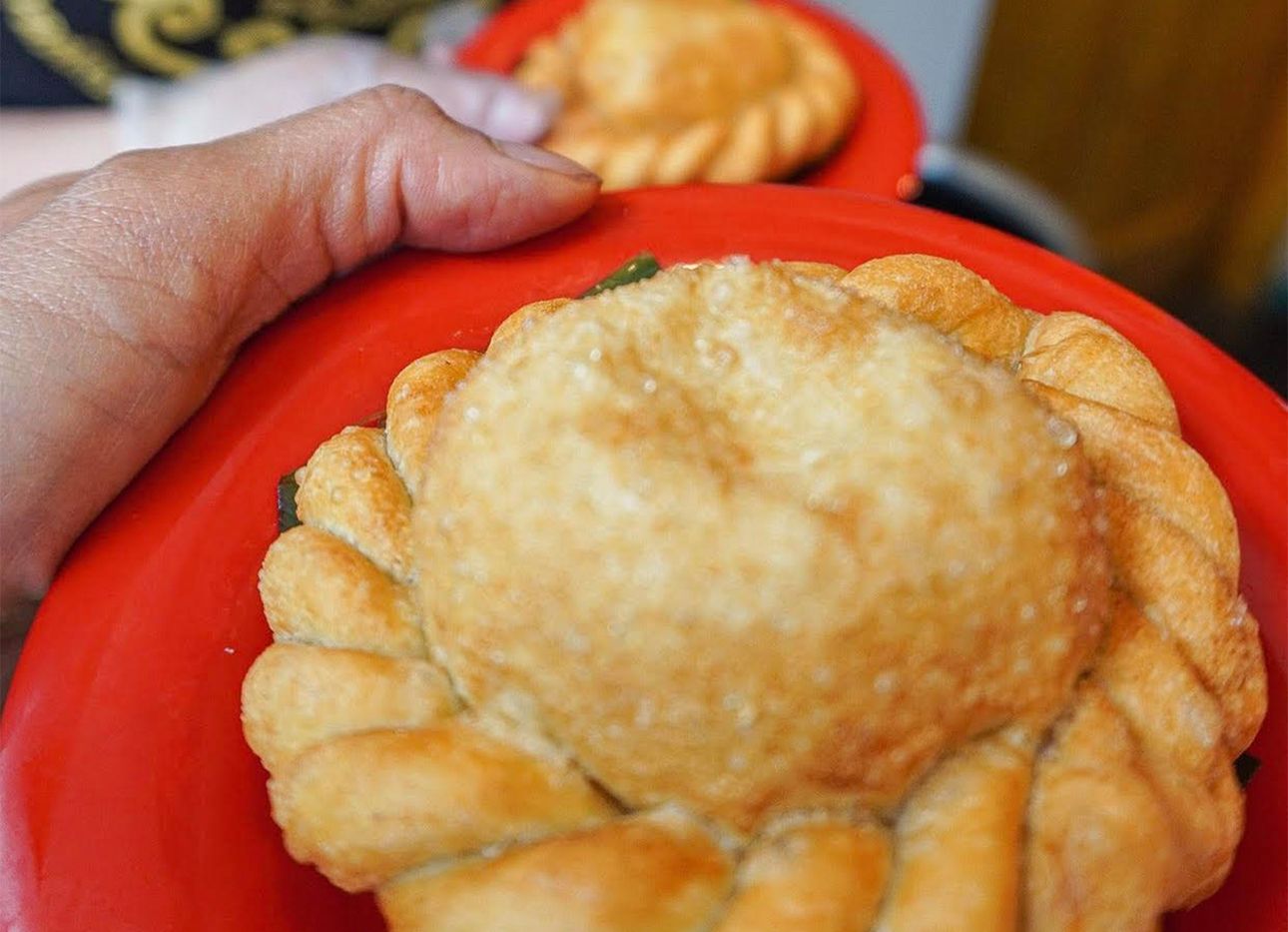
Sweet or Skunky? Malaysian Chef Kyo Pang Considers the Polarizing Scent of Durian
Royalty rarely inspires ambivalence. Therefore, durian—a large, greenish-brown food that’s commonly referred to as the “king of fruit” in parts of its native Southeast Asia—is predictably polarizing. Its thorny reptilian shell holds a potent olfactory sucker punch emitted by the custard-like flesh inside. The sometimes-sweet, sometimes-skunky, wholly un-fruity odor, which varies based on durian’s species and ripeness, routinely elicits extreme reactions: Its aroma has been compared to nasal offenses including raw sewage, rotting flesh, and a mix of turpentine and onions topped with a gym sock.
Such scents suggest why durian is banned on public transportation in Singapore and Thailand, but also why so many people harbor a deep love for the fruit. Kyo Pang, the Malaysian-born executive chef and founder of Kopitiam, a Malaysian café on New York’s Lower East Side, knows durian’s complexities well. The fruit plays a prominent role in her Baba Nyonya heritage—a term referring to descendants of the first Chinese communities that settled in Malaysia between the 15th and 17th centuries—and it featured, for a time, on Kopitiam’s menu (until its odor proved too overpowering for many diners). Here, Pang reflects on her childhood memories of durian, and why she still craves the strong-smelling food today.
“I was born and raised in Malaysia, so I first experienced durian when I was very young, probably around five or six years old. It’s a cultural thing. When it was in season, my father would go pick up a whole basket of durian, usually hand-picked by the supplier. He would drive up, and they would put the durian in his truck. The supplier will have cut two lines in the fruit’s husk.
Traditionally, to open it, you put a newspaper on the floor and put the durian on top. Then, you put a tablecloth on top of the durian, press the fruit, and it will open. We’ll sit around and just start eating it with our hands. We usually don’t add any seasonings or complicate it. Some people are like, ‘Oh, durian is very filling. You're eating it with rice?’ That’s actually been a very common way to eat it. In Thailand, they eat it with sticky rice.
There are several reasons we call durian the ‘king of the fruit’ in Malaysia: the strong odor, how it looks, and how you feel after eating it. You get hooked on it, and it starts to smell good. The fruit looks like a crown. It has this horn and then, right in the middle, there’s something for you to reach into and open up.
When I was a kid, people would say that durian could remedy a hot body. Just cook the shell in water or drink water out of it, and apparently, this tones down the ‘heat’ in your body. Isn’t it strange how the shell and flesh do different things? Older people cook the shell with vegetables or in soups. They say it washes away toxins.
To us, it doesn’t really smell bad at all. It just adds to the taste. You see it more in modern cuisine now. People will make ice cream out of it, which was actually pretty common when I was growing up in Malaysia, or on pizza, as a topping with cheese. You wouldn’t think that durian goes well with cheese, but a lot of people are mixing it with mozzarella. People just love a six-inch pizza with a lot of durian and cheese on top.
For a little bit, Kopitiam did a durian puff. We stuffed the fruit into a pastry, and it looked like a flower. When you bit into it, you could see it was filled with durian, right to the middle. We tried to introduce it to the crowd [in New York], but I think the smell was too much for some people. It’s like stinky tofu: From the odor, you may think you’re not going to like it. But after you eat it, you feel like, ‘Oh shit—it’s not bad!’ The scent, I would say, is like fermented garlic. It’s very rich.
Durian, even in Malaysia, is not considered cheap if you’re in the city. If you’re in a village or suburban area, though, it’s affordable, because a lot of people have their own durian farms there. To eat durian in New York is more of a luxury. A single fruit might weigh fifteen pounds. It could cost you something like $98 by weight, but you can only eat whatever is inside—and there’s not much of it. But if I could get fresh durian from Malaysia right now, I would.”